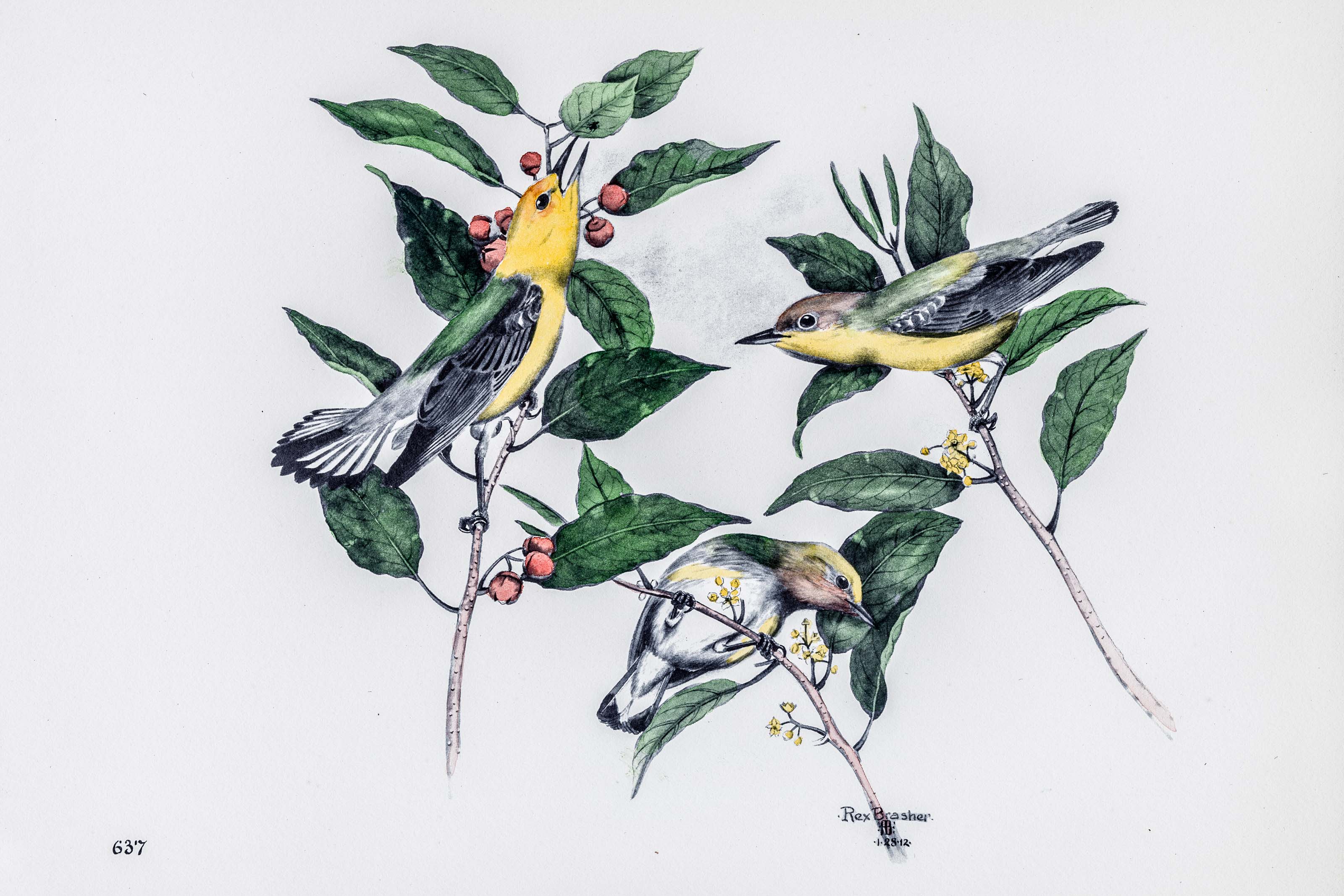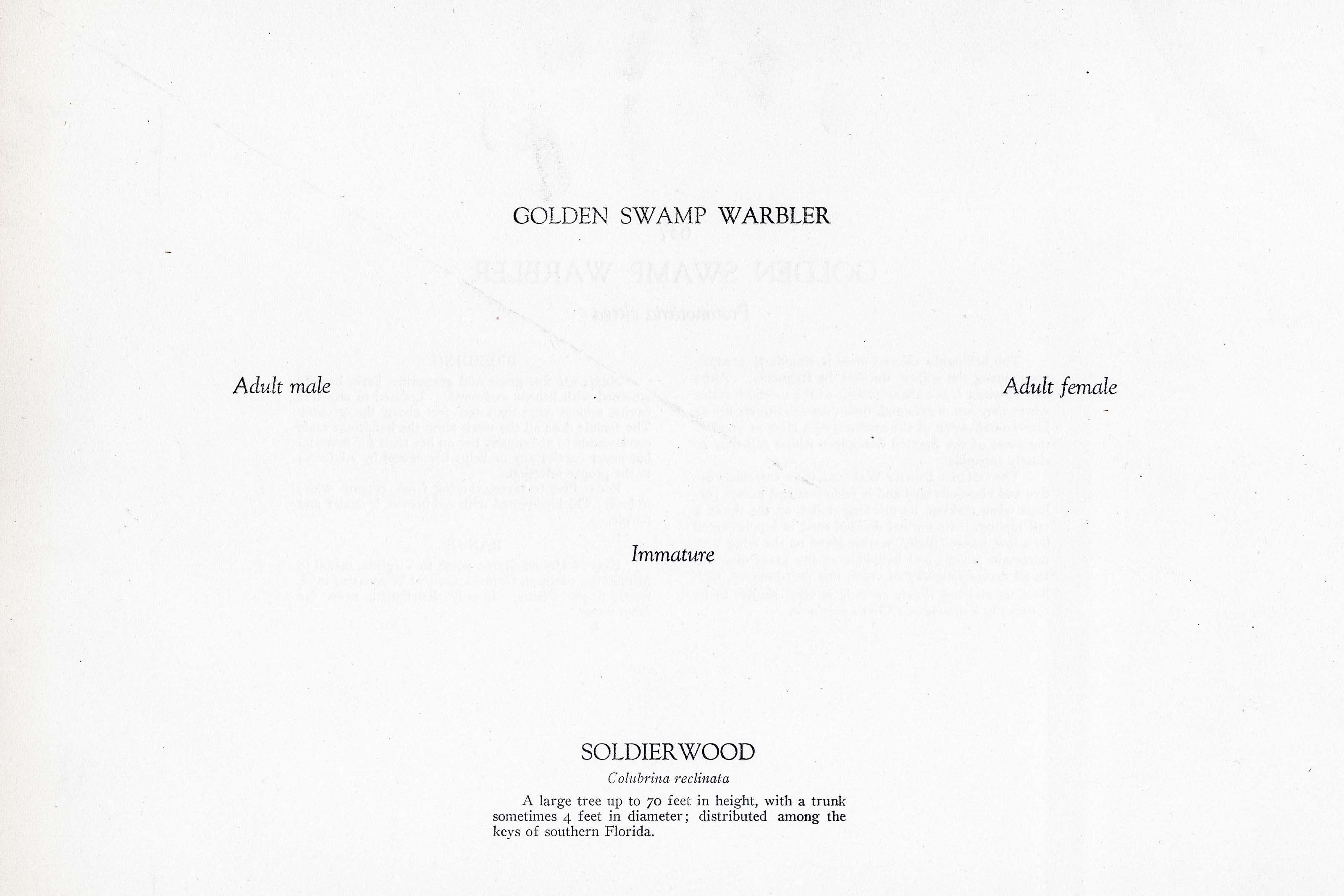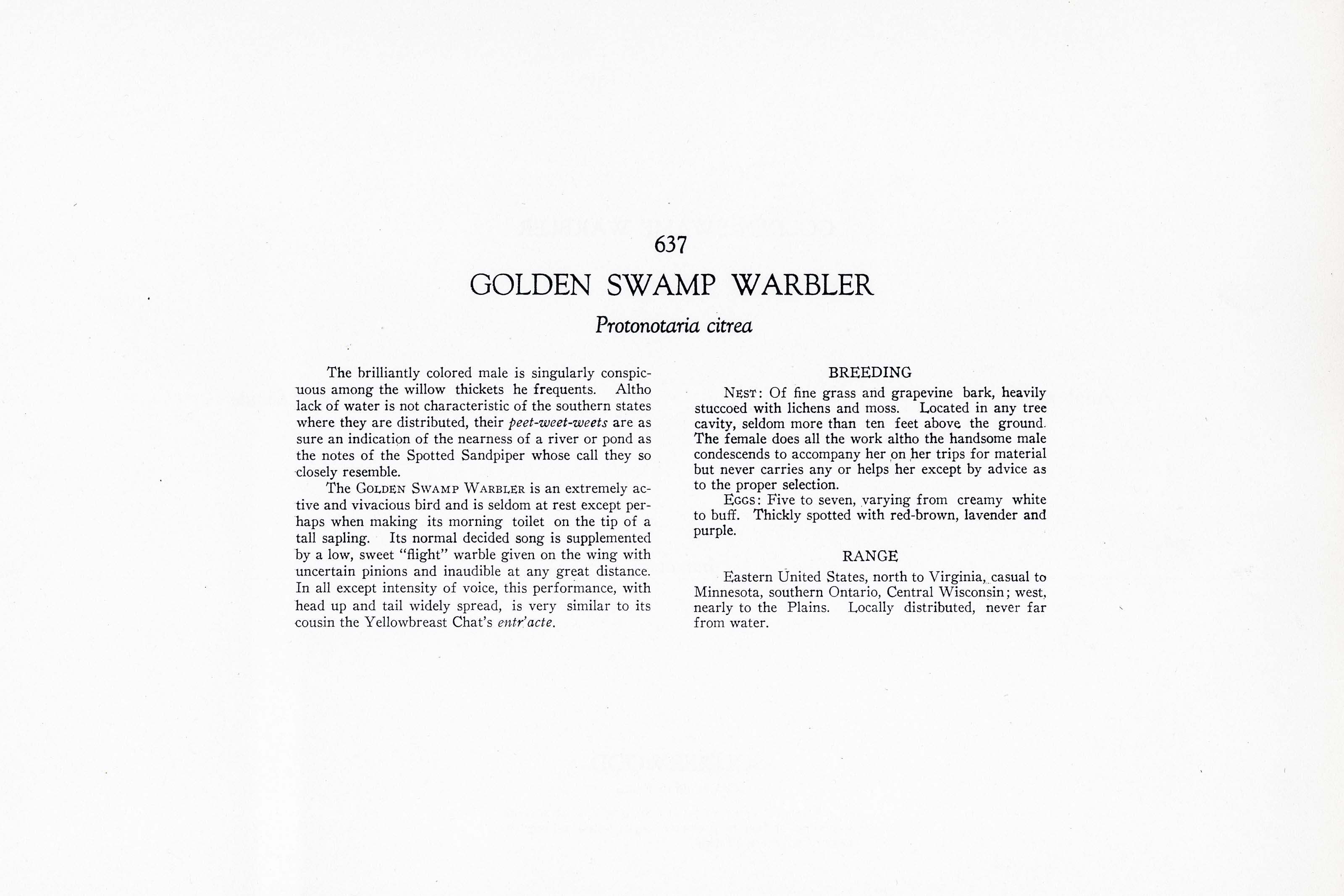






1912
1930
11
637
A team of dedicated board members, volunteers, and student interns has published every page in Volume 9. This volume includes 360 images of paintings and lyrical descriptions of birds, now available online for everyone to enjoy anywhere in the world. This is a monumental task. Each volume requires approximately 400 hours to photograph, edit, transcribe, catalog, and publish online. We need your support to complete this work.
If you're tech-savvy, have a good eye, are meticulous with details, and love structured data, please consider volunteering by emailing us at hello@rexbrasher.org.
We encourage all bird lovers and supporters to consider a monetary donation to support our mission to make Rex's work available for everyone. You can provide a one-time or recurring donation online.
The brilliantly colored male is singularly conspicuous among the willow thickets he frequents. Altho lack of water is not characteristic of the southern states where they are distributed, their peet-weet-weets are as sure an indication of the nearness of a river or pond as the notes of the Spotted Sandpiper whose call they so closely resemble.
The GOLDEN SWAMP WARBLER is an extremely active and vivacious bird and is seldom at rest except perhaps when making its morning toilet on the tip of a tall sapling. Its normal decided song is supplemented by a low, sweet "flight" warble given on the wing with uncertain pinions and inaudible at any great distance. In all except intensity of voice, this performance, with head up and tail widely spread, is very similar to its cousin the Yellowbreast Chat's entr'acte.
NEST: Of fine grass and grapevine bark, heavily stuccoed with lichens and moss. Located in any tree cavity, seldom more than ten feet above the ground. The female does all the work altho the handsome male condescends to accompany her on her trips for material but never carries any or helps her except by advice as to the proper selection.
EGGS: Five to seven, varying from creamy white to buff. Thickly spotted with red-brown, lavender and purple.
Eastern United States, north to Virginia, casual to Minnesota, southern Ontario, Central Wisconsin; west, nearly to the Plains. Locally distributed, never far from water.
A large tree up to 70 feet in height, with a trunk sometimes 4 feet in diameter; distributed among the keys of southern Florida.